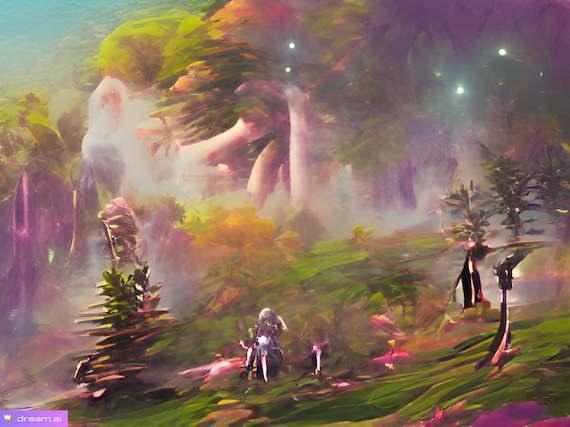Greenfield, Mass. (Special to Informed Comment; Feature) – Korean scientists have confirmed that walking through forest areas improved older women’s blood pressure, lung capacity and elasticity in their arteries. Walking in an urban park with trees, or an arboretum, or a rural forest reduces blood pressure, improves cardiac-pulmonary parameters, bolsters mental health, reduces negative thoughts, lifts people’s moods, and restores our brain’s ability to focus – all findings of recent studies. Park RX America (PRA), a nonprofit founded in 2017 by the public health pediatrician Dr. Robert Zarr, has established a large network of health care professionals who use nature prescriptions as part of their health care treatment for patients. A sample prescription: “walk along a trail near a pond or in a park with a friend, without earbuds, for ½ hour, twice a week.”
As I began this piece on trees in forests, woods and parks, a friend asked, why in January in New England? Why didn’t I wait until the deciduous trees were a palette of new spring green crowning the stark brown trunks and branches of winter? The next day, January 7, nature provided the answer: a 10” snowstorm. Trees after a winter snowstorm – their upstretched dark deciduous branches shouldered with snow and their downreaching evergreen branches pillowed with snow – are a feast for the eyes.
“A forest is a sacred place…The medicines available in the forest are the second most valuable gift that nature offers us; the oxygen available there is the first.” These are the words of Irish born and educated in the ancient Celtic culture of spiritual and physical respect for trees, Diana Beresford Kroeger. This brilliant botanist went on to receive advanced degrees, culminating in a doctorate in medical biochemistry. She affirmed that simply walking in a pine forest is a balm for the body and soul, elevating our mood, thanks to their chemical gift of pinenes aerosols released by pine trees and absorbed by our bodies.
The healing potential of nature even stretches to those hospitalized. Patients recovering from surgery heal more quickly and need fewer pain killers if they have a hospital room with a window that looks out onto nature. Similarly, studies of students in classrooms with a view of nature have found that they both enjoyed learning and learned more than students without a view of nature.
Suzanne Simard worked for Canada’s minister of forests doing research on the most efficient ways to re-grow forests that had been clearcut by the logging industry. Loving forests since a child growing up in rural British Columbia, she grasped immediately that clear-cutting whole areas of a forest and applying herbicide to kill any competitor plant or tree before replanting monoculture tree seedlings was a “war on the forest.” In testing her insight, she found that clearcutting and planting single species seedling trees made no difference to speeding up the growth of the desired tree plantation and in some cases, reduced tree survival in the monoculture wood lots.

“Healing Forest,” Digital, Dream / Mystical, 2024.
In pursuing a doctorate and subsequent years of research, Simard documented that biodiverse forests are the healthiest of forests, with trees communicating with other trees of their own species and other species by an underground fungal network linking their roots with each other. Through this network, known as the wood wide web, trees provide chemical food and medicine to keep each other as healthy as possible. Her work has shown that “the fungal networks between roots of diverse trees carry the same chemicals as neurotransmitters in our brain,” strongly suggesting, she says, that trees have intelligence. She has learned from Aboriginal people that “they view trees as their people, just as they view the wolves and the bears and the salmon as their relations.” We need that back, she asserts.
Trees teach us lessons of community and cooperation through all the seasons, writes German forester Peter Wohlleben in The Hidden Life of Trees. He deems forests as “superorganisms,” sharing food with their own species and even nourishing their competitors. Together they create an ecosystem that enables them to live much longer as a community than a single living tree alone, a life lesson for us humans. Moreover, “sick trees are supported by healthy ones nearby…until they recover; and even a dead trunk is indispensable for the cycle of lifesaving as a cradle for its young.”
Trees are essential for life on earth; the older they are, the more essential they are. They remove carbon dioxide from the air, store carbon in their tissue and soil, give back oxygen into the atmosphere and slow global temperature increases. They offer cooling shade in hardscape urban neighborhoods, buffer cold winter winds, attract birds and wildlife, purify our air, prevent soil erosion during rainstorms and filter rainwater falling through their soil.
Without trees, we could not survive, whereas they have and could live without us. Older than we so-called homo sapiens (“wise men”) by a thousand times, they are wiser than many humans: they do not wage war with each other nor destroy their own habitat. They know not genocide nor ecocide. They are our ancestral model for cooperative, non-violent and sustainable communities.
I write this to honor and thank the multitude of forest protectors across our country and for those working to restore nature to their towns and cities.


 © 2025 All Rights Reserved
© 2025 All Rights Reserved